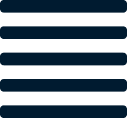Are you stuck with a glut of inventory? Are you wondering how to thrive during this abnormal retail climate? The following guide highlights how to keep up in the corona-economy by intelligently running a sale and what process you should be implementing.
With all of the noise surrounding the pandemic and the inflated promotional activity from retailers to meet demand, you may or may not have noticed a marketing shift surrounding Memorial Day this year. As the kickoff to the official summer season, Memorial Day has historically been known as a discounted shopping weekend, clearing out the last of spring merchandise and signifying the shift into summer products. But for obvious reasons, this year was a little different. According to Edited, 68% of retailers waited until the week prior to the holiday to change their messaging, compared to two weeks prior in 2019. With many brands offering discounts since March 2020, there wasn’t as much of a reliance on “Memorial Day” verbiage driving anything incremental.
But with consumer spending decreasing by 40% and reported upticks in off-price retailer traffic, it is evident that there is a shift towards value purchasing over full price products. According to a report by Mckinsey and The Business of Fashion, revenue from the global fashion industry is expected to decline up to 30% in 2020 - signaling what will in turn be a relative excess of inventory challenging brands. With consumer spending in retail largely focused on promotions, it’s worth considering which promotional activity is right for you and when, if any at all. More importantly, it pays to know how to execute them effectively.
Should you still be having sales?
The negative impact of excess inventory goes beyond the typical cash constraint. Storage and additional costs associated add to the impact on profitability. And with wholesalers cutting back on their own inventory positions for the remainder of the year, the problem is only going to worsen.
In an effort to liquidate excess inventory, many brands have instituted markdowns and warehouse type sales, looked to off-price sellers in hopes of an appetite, or decided to repurpose the goods for a later season. However, these efforts may still not be enough to make a significant dent and avoid the highly criticized and cash negative decision of inventory disposal.
While there are certainly negative outlooks on the impact of sales to a brand’s equity, it’s hard to validate if anyone will think less of you during a time of great economic turmoil. Though, if you’re still on the fence, consider the possibility of aligning your sale to a different trend. One that has single handedly shifted the American promotional retail calendar. We’re talking about the Amazon Prime Sale.
What began in 2015 has grown to become a trend for retailers beyond Amazon. In 2019, Amazon sold more on the 2 days of prime sale than it did on Black Friday and Cyber Monday combined. With over 175 million items purchased worldwide, it’s no surprise that other retailers jumped on the bandwagon. But with the current climate, this year’s Prime Sale is expected to be pushed out until September.
For those wondering if it’s worth it to piggyback off the trend for another year, the reality is that your old excess inventory will need to be cleared out eventually to make way for more profitable endeavors. At the end of the day, cash is king. And there is no better time to incentivize value purchasing than when the industry makes a trend out of it.
Whether you've been holding off and are planning on doing your first sale in September, or you’re ready to do so earlier, the following steps will help guide you on the processes to follow, what pivot points should be in place, and the resources to have ready to adequately review performance.
#1: Start with your internal “why”
You know the classic rhetorical question, “If all of your friends jumped off a cliff, would you jump too?” In the case of Amazon’s Prime Sale, the answer is likely “yes.” But regardless, it’s still important to have a “why”. This why will be the stepping stone to setting up your expectations, assessing your results, and guiding your creative efforts.
Beyond sentimental or qualitative reasons, the first component to plan should be revenue and profitability. Do you expect to do the same average sales? Of course not. But what degree of profitability is worthwhile to you to offset the negatives?
Other components of your why may be the impact to your customer or LTV. Would a sale serve as a way to retain them or is your brand not sticky enough to warrant loyalty? Aligning your expectations ahead of time to the metrics that matter most to you will help you plan and execute effectively.
#2: Assess the competitive landscape
If you’re stuck on the point above, research the product industry you’re in and highlight examples of success based on your competitors. Combine this with macro trends and insights to review your strategies and goals and adjust accordingly.
#3: Talk about timing
Once you have your goals set, the next step is to discuss timing and involve the appropriate parties. Determine who in your company would be impacted (and who would not for process of elimination). Depending on the size of your business, responsible parties could be: merchandising/buying, planning, marketing, intelligence, tech, customer service, supply chain...in other words, pretty much everyone. Utilizing a RACI chart can help separate ownership and maintain accountability. Combine this with an effective time management tool and you got yourself off to a great start.
#4: Determine products and the offer
Based on your “why”, determine which products will be considered for the offer, if not all. In selecting products, it’s important to assess the impact on profitability. In many cases, it wouldn’t be wise to offer a product with a weak margin at a generous discount as this could potentially cause you to lose money. However, if it’s a product that is predominantly purchased with another high value good, then it may be worthwhile.
Understanding your customer behavior and inventory analytics will be crucial in helping you determine which products to put on sale. Assess your WOS by SKU to understand which products will take the longest to sell based on how much inventory you own. Analyze this against the individual product margins to deem the most qualified for sale goods.
If you’re planning on running an assortment wide offer, ensure your total net margin will still be beneficial if there are products you will lose money on. And don’t forget to consider costs beyond product to calculate profitability. Things like packaging, fulfillment, storage, increased customer service hours, and marketing assets all add up and should be considered as part of the big picture.
#5: Set up KPIs for before, during and after
Similar to setting up goals, having KPIs to measure along the promotional journey will help guide any necessary decision making. Some popular ones include:
- % to plan - Perhaps the most important, this metric measures how close you are to your sale target. Compare this to traffic and conversion to see if there is a correlation.
- Sales growth - Along with the above, it’s important to note the degree to which sales are changing on a day by day basis. If sales growth is flat but traffic has increased, it could signify issues with conversion or the sale of unexpected lower priced items.
- Traffic - The number of visits to your storefront (also called sessions)
- Conversion - The % of visitors who take a desired action (typically a purchase)
- AOV - Average order value measures the dollar amount associated with an order. During promotional periods, AOV should increase even with a reduction in AUR. An increase in AOV signifies an uptick in purchasing demand.
- Stock-to-sales - A measurement of the amount of stock available compared to the level of sales realized.
- Excess inventory - Inventory greater than what is deemed the “right” amount. Typically businesses will use a set period of time based on it’s turn goals to determine how long an inventory position should be. Any value of inventory greater than this period would be referred to as excess inventory. This metric should go down as the sale period increases.
- OOS rate - Out of stock rate refers to the amount of an assortment that is not in stock. It is calculated as: SKUs not in stock / total available SKUs. It is likely this will increase as the sale continues if you have products with low WOS on hand offered. It’s important to be transparent with stock levels so as not to frustrate the customer shopping experience.
- Sell-thru rate - A measure of the amount of inventory owned compared to the amount sold. For a specific time period, it is calculated as: units sold / units owned
- Response time - The length of time for a customer inquiry to be answered
- Fill rate - A metric that shows the number of items sold compared to the number of items purchased. It is calculated as: items sold / items purchased. If this number exceeds 100%, it means that goods are being backordered due to stockouts. In the case of measuring fulfillment, it means there are delays in shipping out what was ordered on that day.
#6: Execute & improve
If along the way these KPIs aren’t up to your expectations, have tactics in place to improve while the sale is still taking place. Real time reporting and visibility will be critical in providing you with this agility. Once the sale comes to an end, be sure to re-group internally with stakeholders and review what took place compared to expectations. Beyond the impact to profitability, sales can be a great tool to understand buying behavior and demand. After following the steps above, you’ll be more informed and educated on your business and will be able to improve performance for the next sale.
By now, you should have an understanding of what insights to use to determine the viability of your sale, the steps you should take to run an effective one, and the resources to have in place along the way. In times of great economic uncertainty, planning can certainly be a challenge.
Beyond promotional activity, it can be difficult to know when data will be indicative of normalcy and long term demand. The biggest piece of advice we advocate, and the benefit behind using tools and systems like Fuse, is the ability to be as agile as possible. The biggest strength to offset the weakness of uncertainty is the capacity to pivot with as little risk as possible.
---
This piece was written by Fuse Inventory, an inventory planning software powering the next generation of multi-channel retailers. Fuse centralizes inventory, sales, and procurement data to generate a predictive forecast and inventory replenishment plan.
With Fuse, data is actualized daily to save you time and ensure accuracy. No more exporting data into a fragile web of Excel sheets. Fuse generates algorithmically-driven forecasts, while helping you maintain granular control of the data. We streamline the inventory planning process and help you manage your supply chain in real-time. Master your cash flow and optimize your business with Fuse Inventory. For more information, please contact sales@fuseinventory.com.
.png)

.png)









.png)



%20hover.png)
.png)
hover.png)







Let us know what you think about this post
Put your comment below.